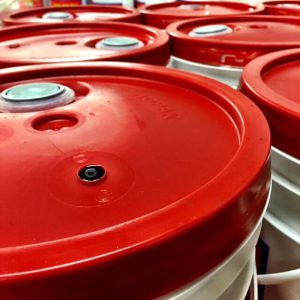Winemaking with Italian juices
Let’s make wine from Italian juice… at home!
Many winemakers wait all year for their annual Italian juice pickup at Musto. Despite the fact that they may be able to find some of these juices from California, they look forward to knowing that they will be able to make wine that hails from Italy itself.
There’s so many juices to choose from:
- Amarone- cooked cherries, dark plums, cherry liqueur
- Barolo- tannic, rose aroma
- Brunello- cherry, blackberry, tannic
- Chianti- red fruit, dried herbs, herbaceous
- Dolcetto- plum, blackberry, cocoa
- Lambrusco- fruity, blackberry, bright red fruits
- Montepulciano- red plum, thyme, baking spices
- Moscato- sweet, fruity, aromatic
- Nebbiolo- rose, cherry, leather
- Nero D’Avola- cherry, plum, licorice, tobacco
- Pinot Grigio- lemon, lime green apple, bright and crisp
- Sangiovese- tart cherry, strawberry, plum
- Trebbiano- peach, lemon, apple
- Valpolicella- cherry, cinnamon, chocolate
For winemakers who don’t have access to a crusher, destemmer, or press, making wine from Italian juices is a great way to get the joy of making your own wine with less steps and less mess.
So how can you start making your own wine from Italian juices? Follow these steps and you’ll be on your way!
- Choose an Italian variety that speaks to you.
- Come to Musto Wine Grape and pick up your pail of juice.
- Bring it home, pop open that lid, and add 1/4 tsp potassium metabisulfite to it. Add pectic enzyme if you’re going to (5 drops per gallon of juice). Give it a stir.
- Allow it to come up to room temperature – we’re talking 60 degrees or so.
- Choose your fermentation vessel: will you keep it in pails or ferment in a carboy or demijohn? Make sure everything is clean and sanitized. *Be sure there is enough room to account for fermentation foaming*
- If you are going to add fermentation tannins or additives (like oak dust, Booster Rouge, Booster Blanc) you can add that now. *Note: do not add tannins such as FT Rouge within 8 hours of adding enzyme*
- Pitch the yeast once the temperature has reached at least 60F. Yeast strain choices will vary depending on the juice you choose – ask a winemaker at Musto Wine Grape for a strain recommendation for the varietal you’re making. Follow the yeast starter directions explicitly. Be very careful of temperatures, never adding yeast if there is more than a 18 degree difference between the yeast starter liquid and the juice.
- Carefully monitor the fermentation by checking Brix levels daily. Add yeast nutrients as needed if you choose to do so.
- If you are adding malolactic cultures to your wine, you may also chose to do this at 1/3 Brix depletion. If using a malolactic nutrient (Opti-Malo Plus) with the bacterial culture, hydrate the nutrient in a separate container from the bacteria and add to the must directly before the addition of the bacteria. Follow all directions on the bacteria and nutrient packets explicitly.
- When the fermentation is complete, rack off the lees and continue aging. Many Italian wines are aged with oak – if you choose to do this, you can do so in oak barrels or with oak alternatives (such as chips or staves).
And there you have it! Delicious Italian wine that you made in your own home. There’s nothing more rewarding than having a glass of wine you made with juice from a reliable source.
Feeling inspired? Come down to Musto Wine Grape and pick up some Italian juice. But don’t wait too long – we are fast approaching the end of harvest time. Pick up everything you need and and be on your way to kicking back as you sip on a glass of homemade Italian wine. Who knows, maybe you’ll even make Frank’s Chicken Fettuccini Alfredo to accompany it!








Recent Comments